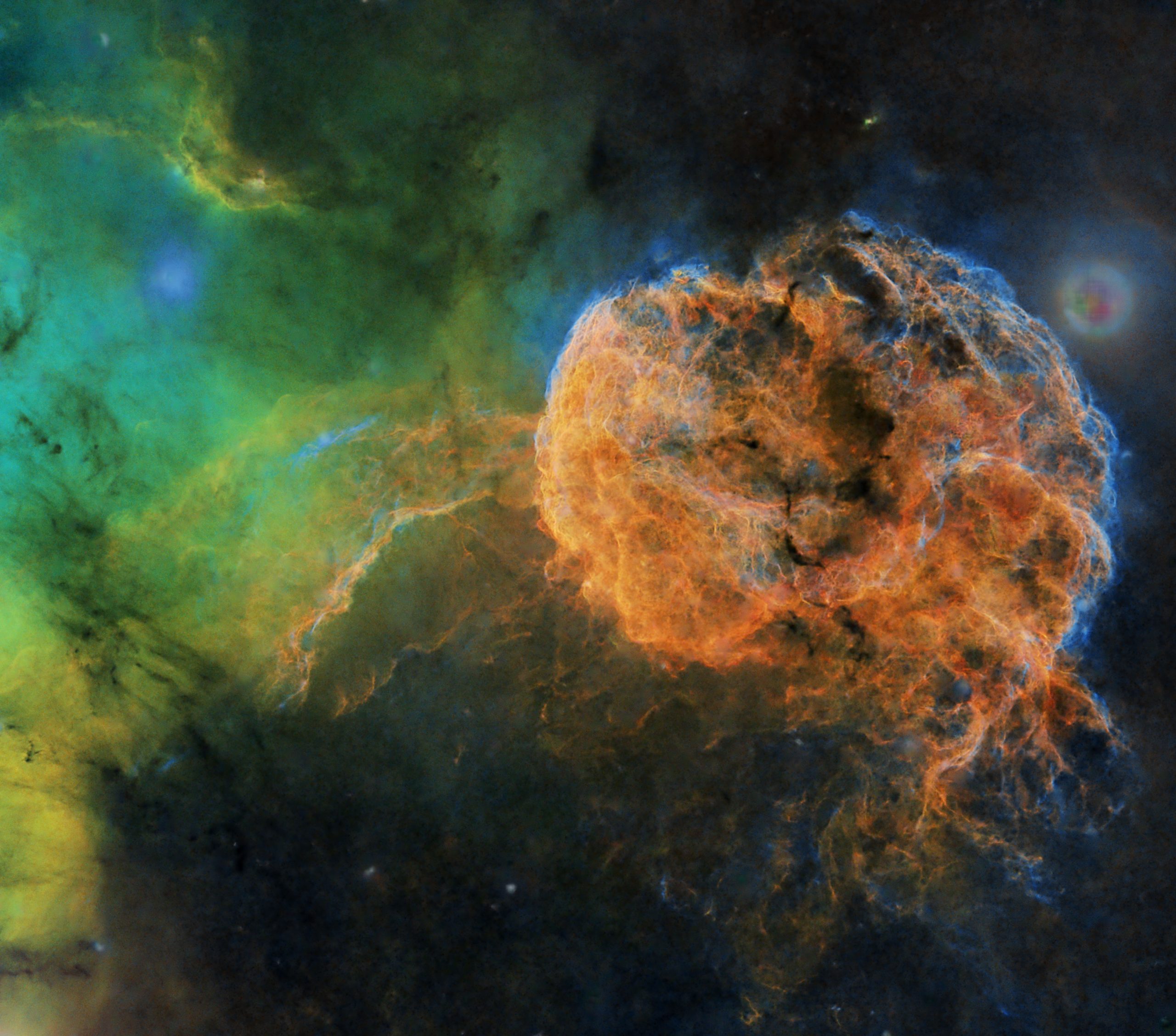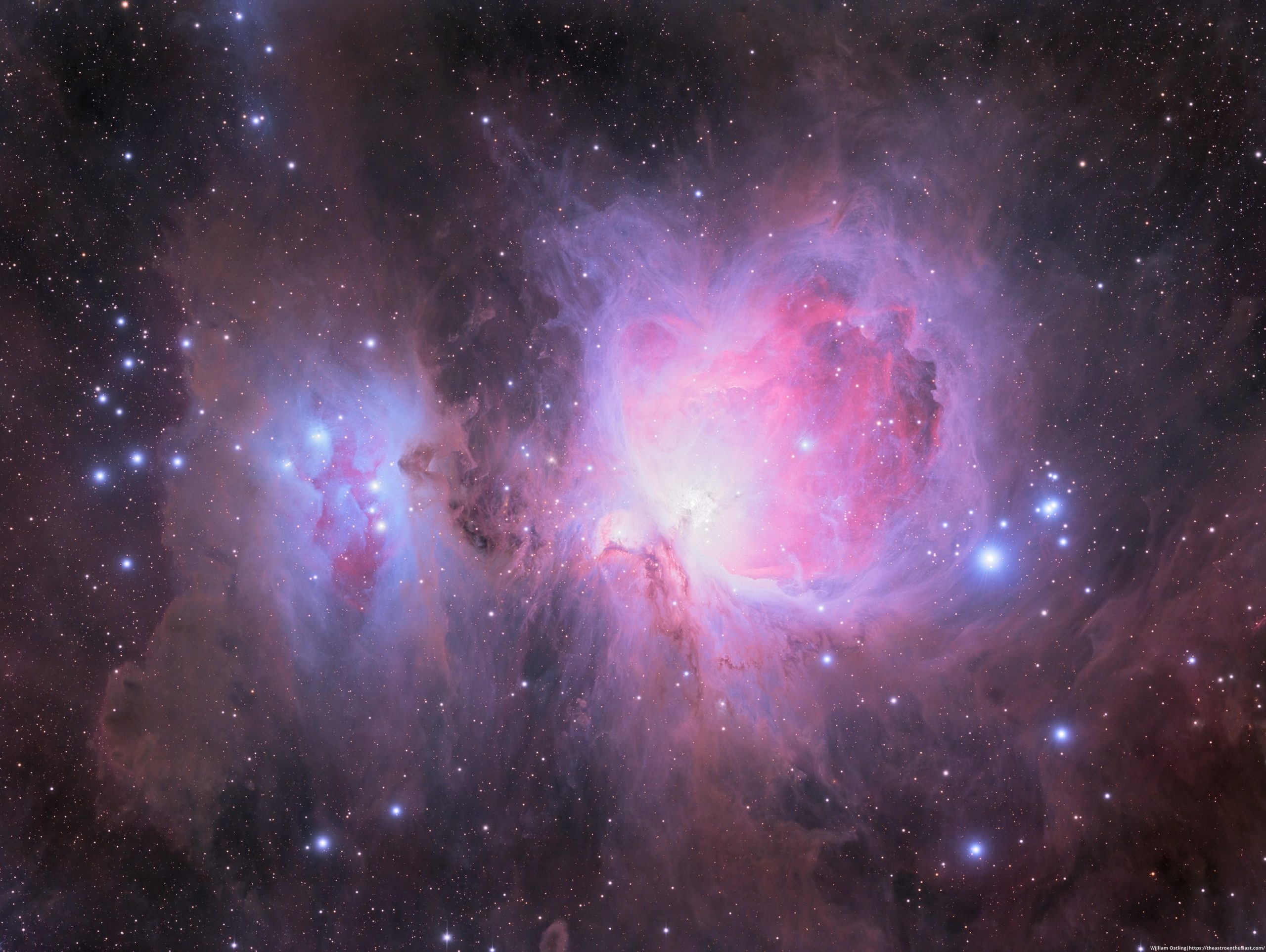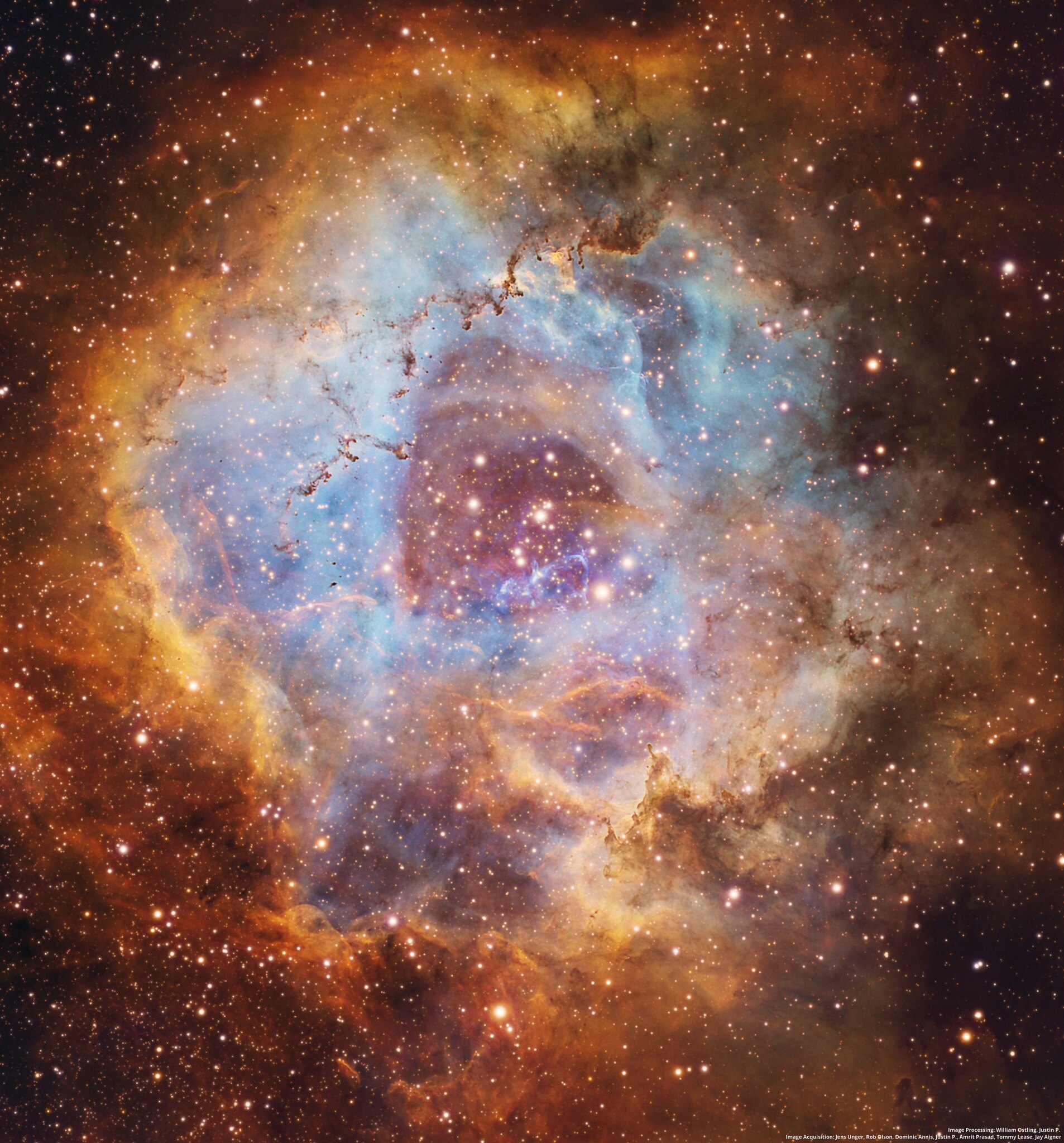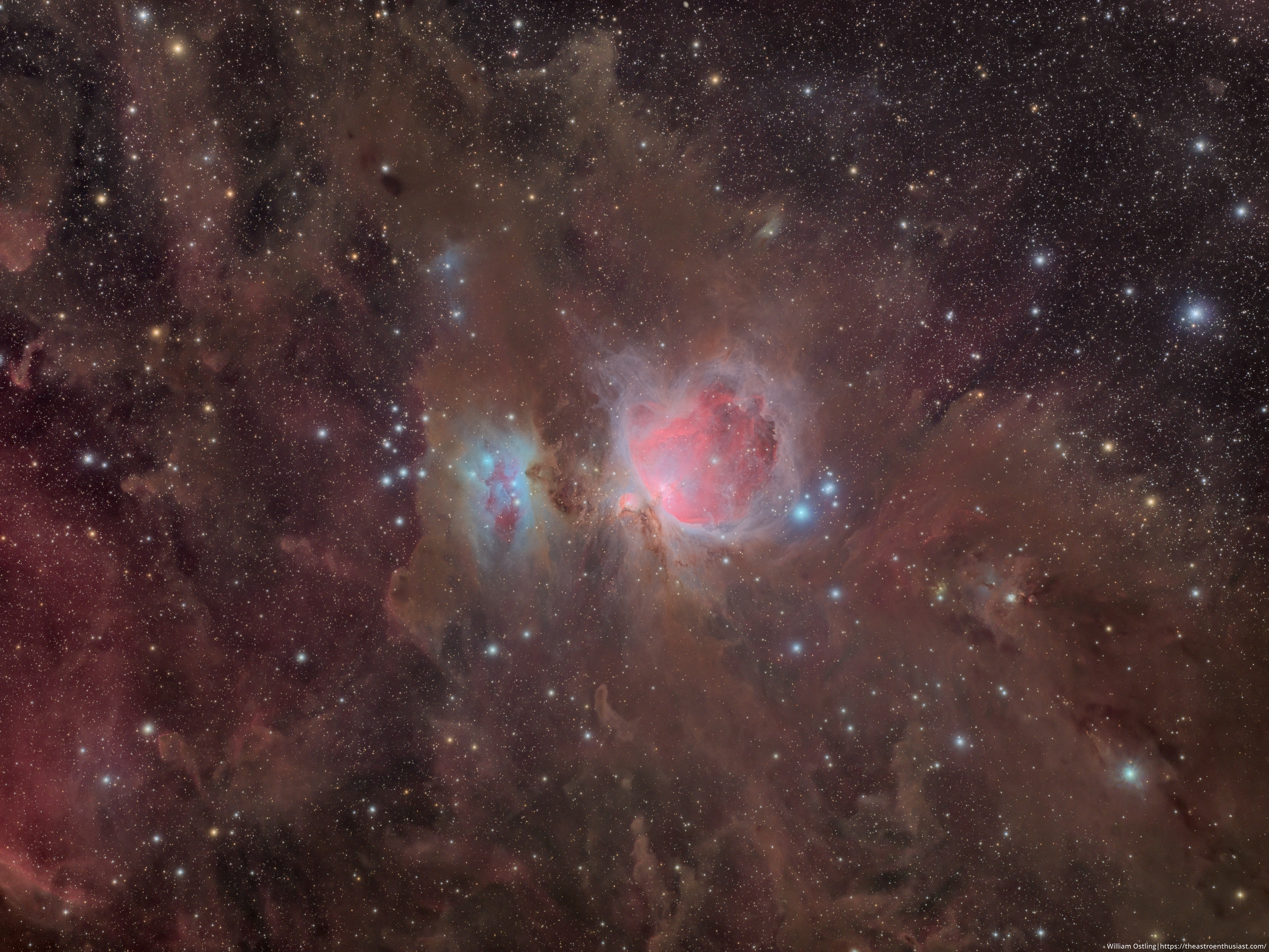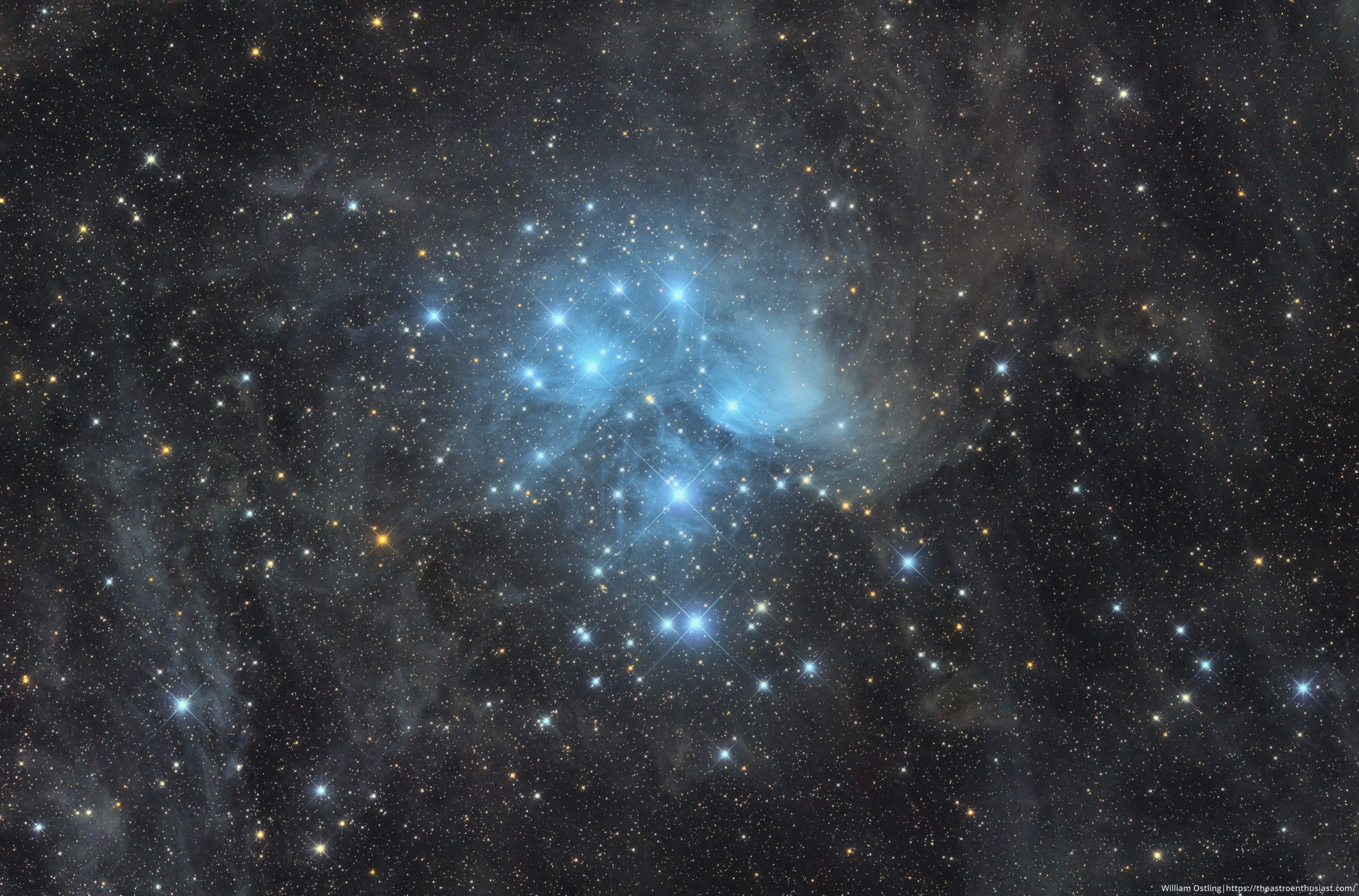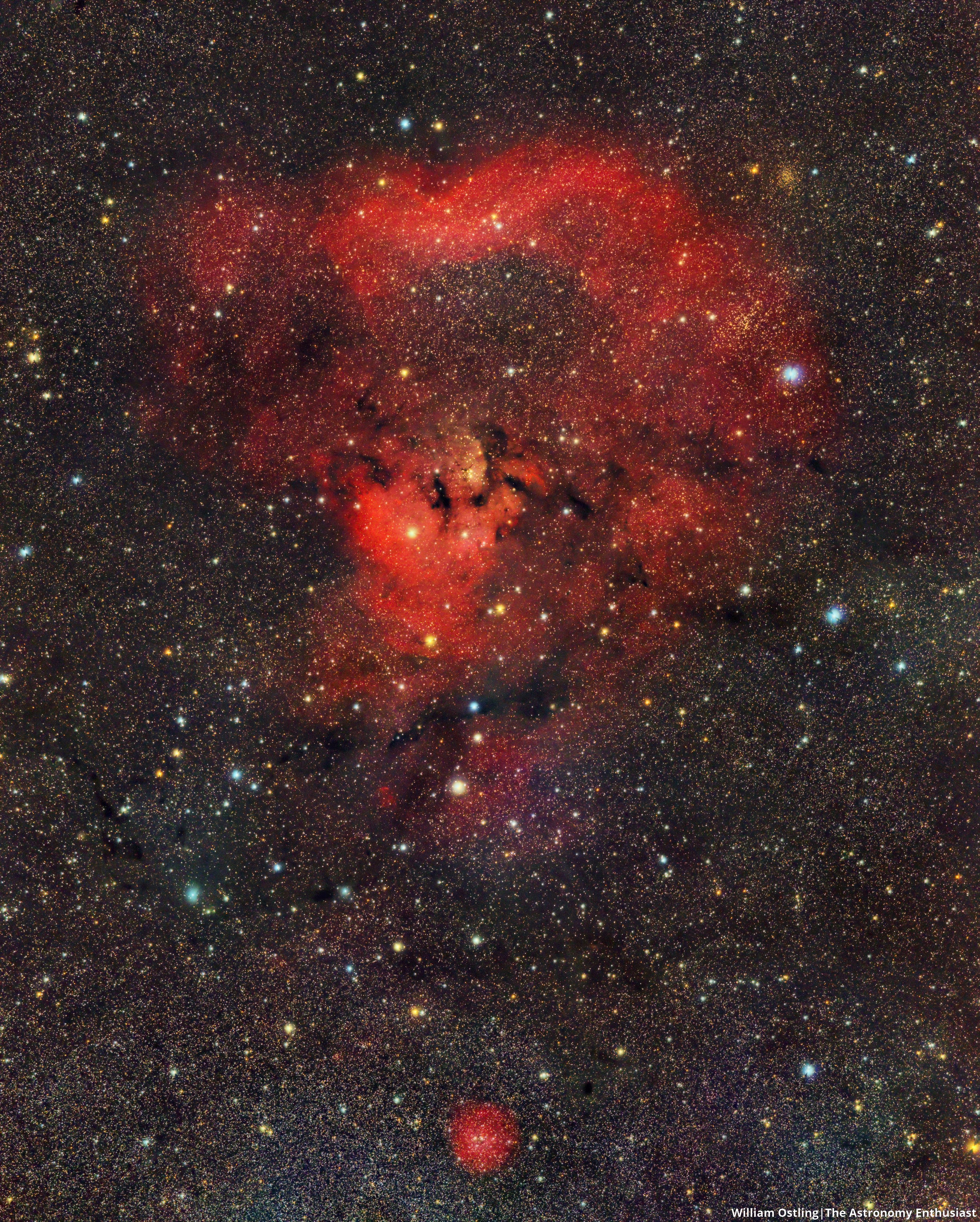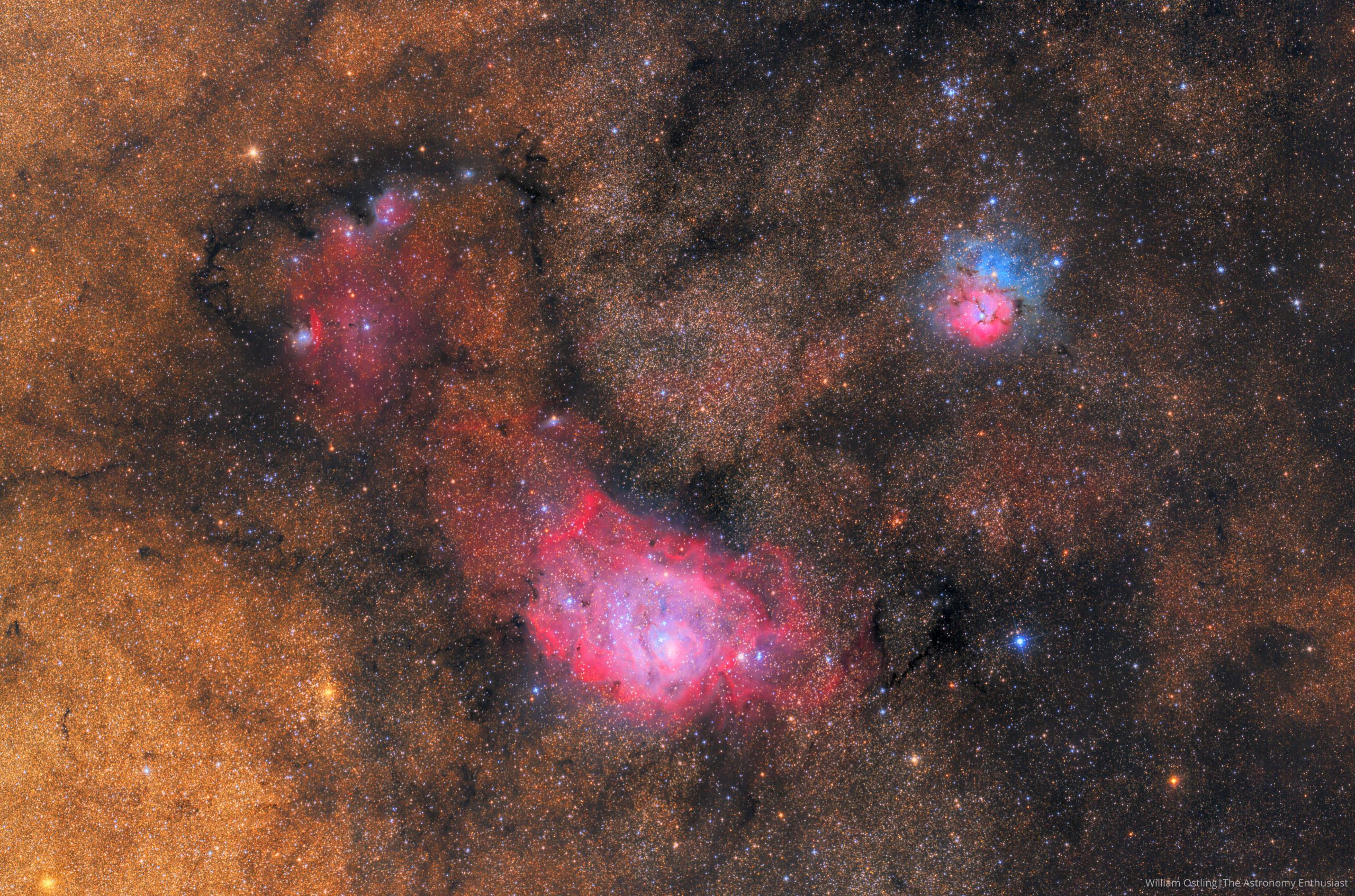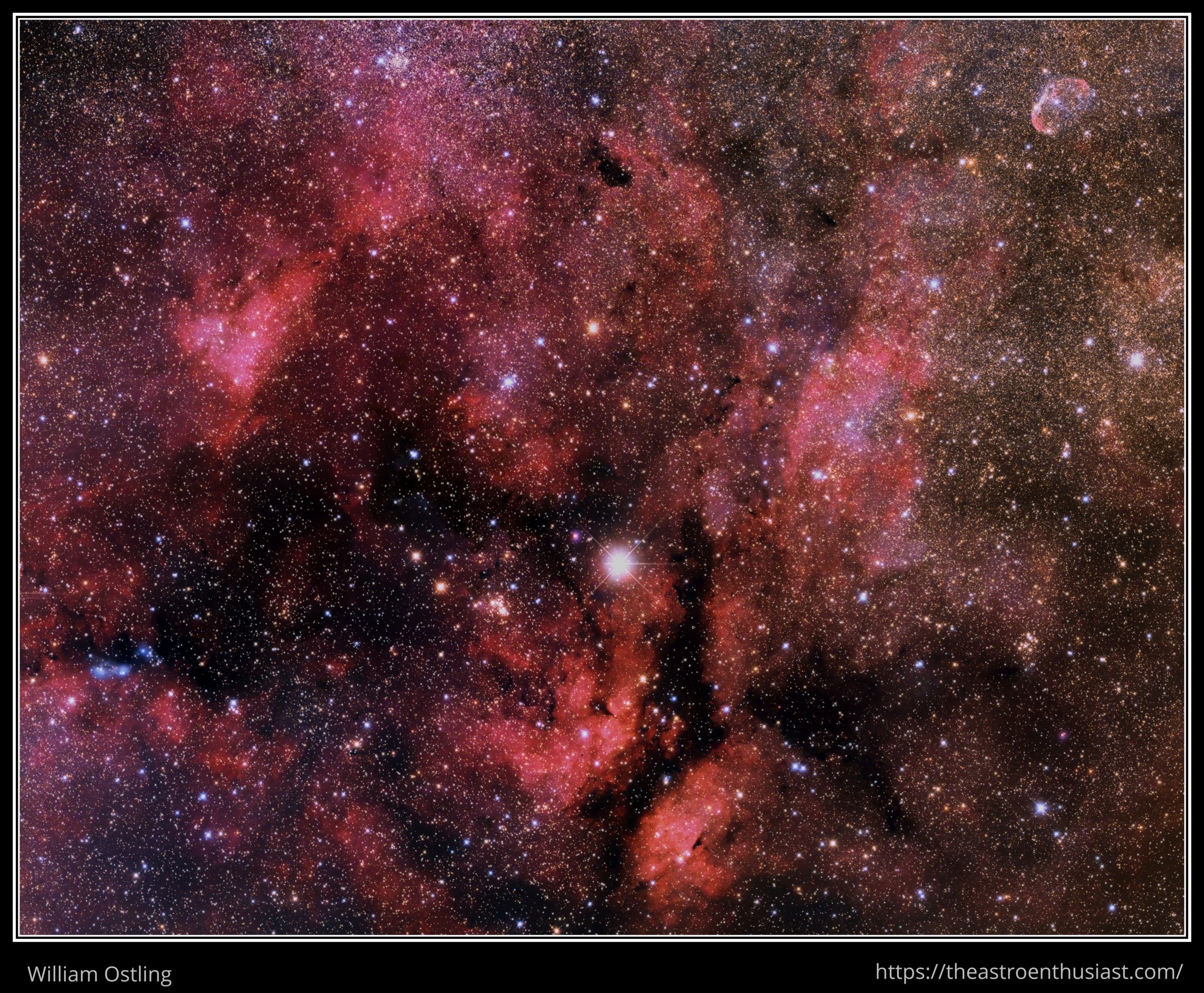The dim and detailed jellyfish: A 112-hour collaboration from three continents!
The jellyfish nebula is a notoriously dim object in the night sky. As a result, most images of this nebula are highly denoised, leading to a loss of detail. But by combining nearly 1000 exposures and 6740 minutes of exposure from collaborators across three continents for a total integration time of 112.4 hours, we were able to reveal structures and detail previously not displayed by previous images. In this image, channels are mapped in the classic Hubble palette, where ionized sulfur is represented by red, ionized hydrogen […]
Read more